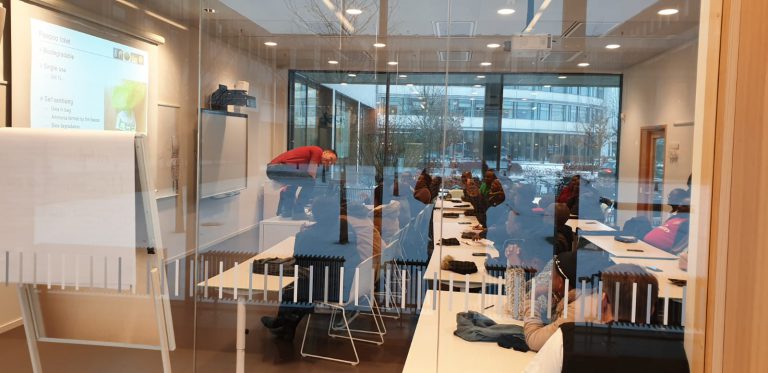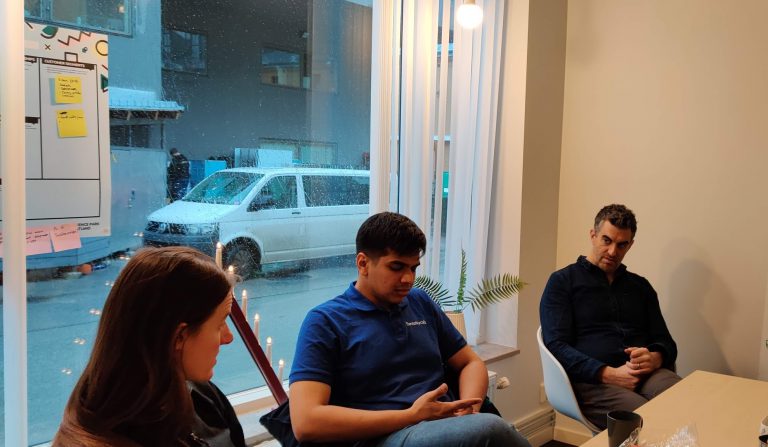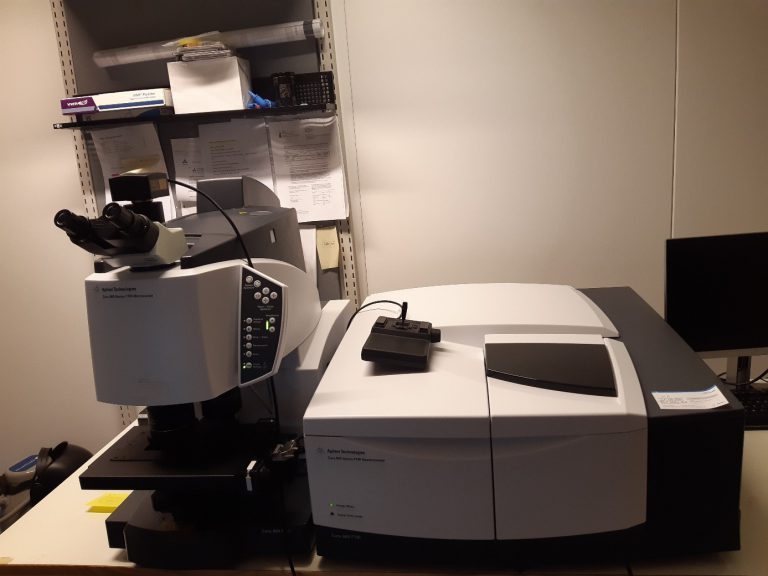
Björn demonstrerar hur man använder en PeePoo-toalett under sin föreläsning
Tidigare den här veckan var ett fåtal medlemmar i Kretsloppsteknik värdar för en grupp av SIDA: s internationella träningsprogramdeltagare i Uppsala. NIRAS på uppdrag av SIDA genomför ett antal internationella utbildningsprogram. Kretsloppsteknik är involverad som en del av detta program genom NIRAS med fokus på deltagare från både asiatiska och afrikanska länder. Under dessa besök lär vi ut, presenterar och gör teknikdemonstrationer genom fältbesök där vi talar om säker näringsåtervinning, källseparerande sanitetssystem, hantering av organiskt avfall, socioteknisk systemanalys, etc.



